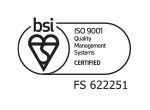Synergy News & Blog: News
Revitalising History: Turning Timeless Properties into Unique Hotel Destinations

Revitalising historical properties and transforming them into unique hotel destinations offers a myriad of benefits, blending cultural preservation with commercial opportunity.
Often situated in prominent town centres or idyllic rural estates, these properties with their unique architectural character provide an enchanting allure.
Beyond their aesthetic appeal, their transformation into hotel facilities preserves historic sites for future generations, ensuring that they remain economically viable and culturally relevant.
In addition, decarbonising existing building stock is crucial for the UK to achieve its net-zero targets by 2050. According to RIBA, more than one in five buildings in the UK pre-date 1919. Ensuring these historic sites are environmentally sustainable and energy-efficient reinforces their relevance in our rapidly changing world. Their modernisation not only safeguards the past but also enriches the present and future.
Hotels housed in historic buildings offer guests a cultural immersion that is both memorable and authentic. This unique visitor experience enables hoteliers to distinguish themselves from competitors, as well as aligning their brand with a commitment to heritage and sustainability.
Heritage Development – A Cost Perspective
The Team
Delivering a successful hotel project within a historic building begins with assembling a highly skilled and experienced project team.
Ensuring the team have blended knowledge of conservation principles and lessons learned from similar hotel projects is vital to addressing the unique complexities these projects present.
The Budget
A robust and realistic budget from the outset is critical. Unlike new-build schemes, historic property developments require cost planning that goes well beyond interpreting schematic designs. An experienced conservation cost consultant will ensure that budgets account for hidden risks, site constraints such as restricted access, inflation, and other unforeseen conditions often encountered in historic properties.
Retrofitting heritage buildings is inherently more complex and typically more expensive than constructing new ones. Specialist materials, traditional craftsmanship, and the need to comply with conservation regulations all contribute to this complexity. Close collaboration between the project team is therefore essential during design development. Your conservation cost consultant will provide detailed elemental cost planning and ongoing cost monitoring to help mitigate risk and help navigate you through any financial challenges.
The Unknown
When peeling back the layers of these historic building projects onsite, unexpected conditions may be uncovered.
The project team must carefully manage any potential risks associated with unknowns. For example, Synergy’s conservation cost consultancy team employ highly detailed tendering processes with the inclusion of provisional allowances for areas of risk, this enhances accuracy and provides cost resilience throughout the project delivery.
The Transformation
Balancing heritage preservation with modern sustainability expectations is another key cost challenge.
Your project team will need to creatively work together to identify the most cost-effective solutions to thoughtfully integrate energy efficiency improvements into the building fabric – without compromising historic integrity.
As a developer you will also likely need to consider additional modernisation costs. These may include enhancements for accessibility, structural interventions to adapt the building for hotel use, and upgrades for fire safety and compartmentation.
Navigating planning and regulatory requirements for the retrofitting of historical buildings can complicate timelines and cost. Given the commercial pressures to open the venue and begin generating return on investment, early engagement with planning authorities and heritage bodies is vital. The expertise of your project team is crucial for navigating this, as they will offer strategies to mitigate these challenges as effectively as possible.

The Newt in Somerset exemplifies the successful transformation of a historic property into a unique hotel destination. This estate, rich in heritage, has been meticulously restored to offer guests a blend of luxury and history. The investment made in the preservation of the property has ensured that the Newt is both economically sustainable and environmentally efficient.
Conclusion
Revitalising historical properties into destination hotels is an endeavour that requires rigorous planning, specialist expertise and a deep respect for the built heritage. Whilst the costs and challenges are significant, the rewards in terms of cultural enrichment, economic sustainability, and environmental efficiency are unparalleled. These timeless properties offer breathtaking spaces and an authentic experience that resonates deeply with visitors, making them a valuable asset in the hospitality industry.














